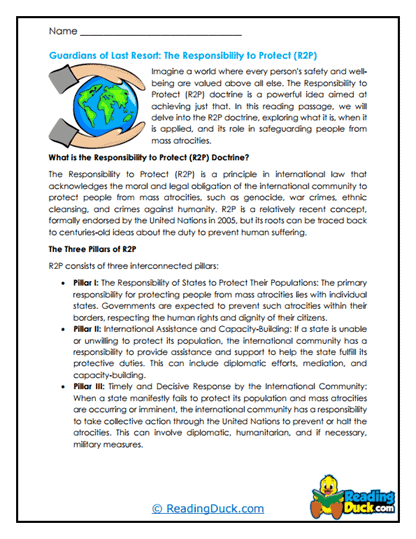
Protecting All Short Answer
This passage explains the Responsibility to Protect (R2P) doctrine, an international law principle designed to prevent mass atrocities such as genocide and war crimes. It describes the three interconnected pillars of R2P, which are: the responsibility of states to protect their populations, the international community’s duty to assist if a state is failing, and the collective intervention when peaceful measures do not work. R2P aims to safeguard human lives by outlining global duties in protecting populations from serious harm. The passage emphasizes that this doctrine is crucial for preventing suffering on a large scale.
Reading about R2P helps students enhance their vocabulary with terms like “atrocities,” “genocide,” and “intervention.” It builds comprehension skills by introducing complex international concepts and linking them to real-world scenarios. The passage also fosters critical thinking by encouraging students to consider how global laws can prevent mass violence and hold states accountable. Additionally, it helps develop grammar proficiency by exposing students to formal writing and legal terminology.